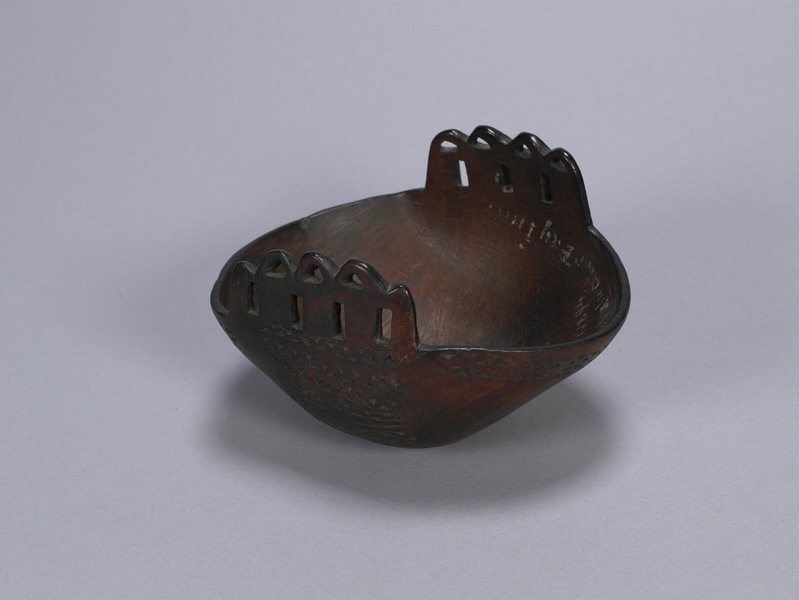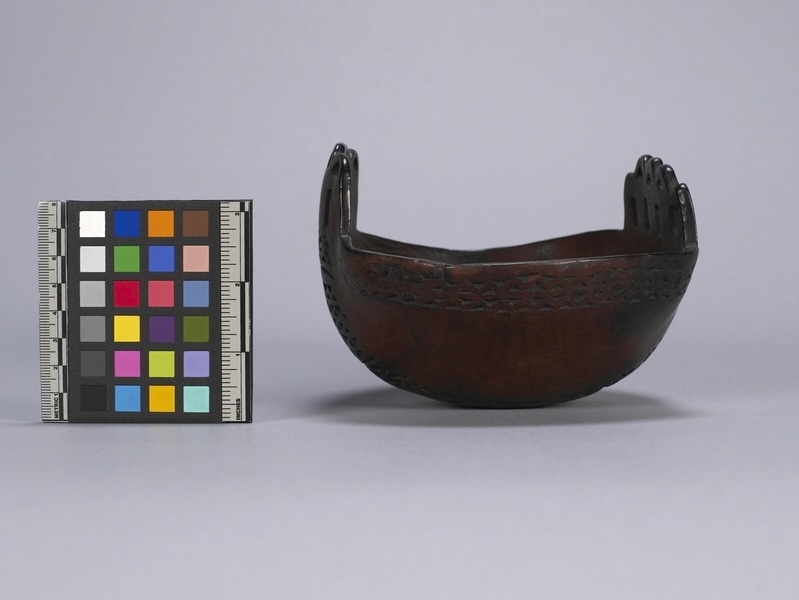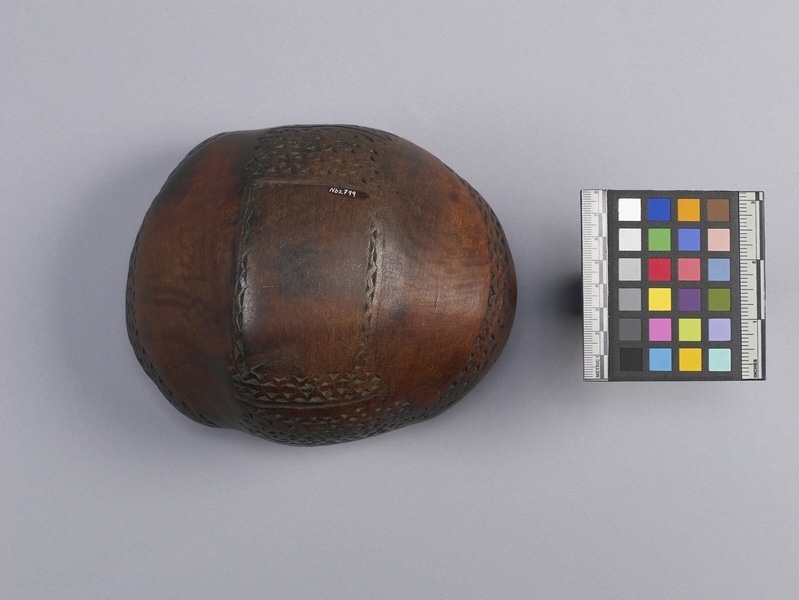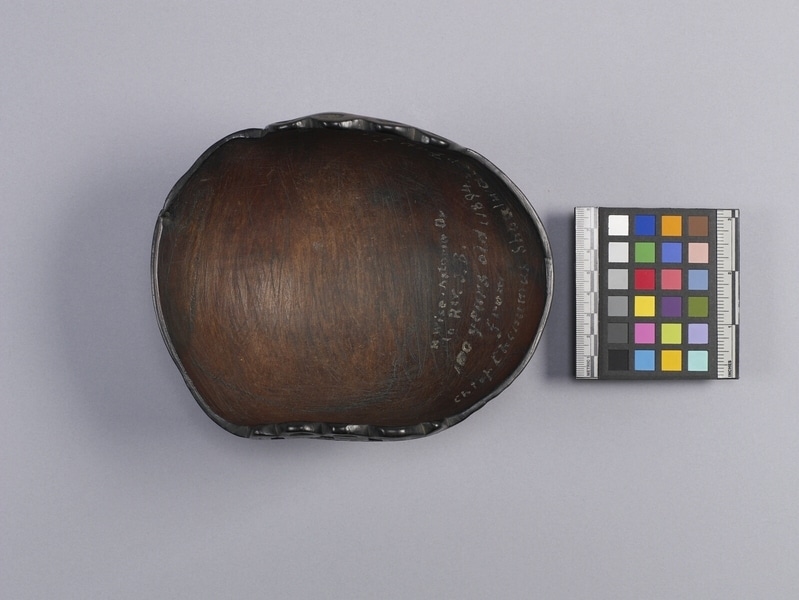Horn Bowl Item Number: Nbz799 from the MOA: University of British Columbia




Description
Small oval-shaped bowl made from horn. The front and the back sides slope upwards from a small flat rectangular base. The sides are almost vertical and terminate in rectangular open work handles. One handle has four vertical rectanglar openings surmounted by three rounded triangles. The other handle has three vertical rectanglar openings surmounted by four rounded triangles. A series of incised horizontal zigzag and solid lines decorate the area around the rim (two horizontal bands at either side) and from each handle to the base and around the base (multiple bands from one handle down along the bottom and up to the other handle). The interior of the bowl has a scratched surface with a white inscription.
History Of Use
Sheep horn bowls are highly treasured heirlooms among the people of the Northwest Coast. Bowls of this size were often used to hold food items such as fish oil or grease.
Cultural Context
traditional art; domestic; ceremonial
Specific Techniques
Bowls were made from sheep horn by steaming or boiling, spreading and reshaping in a manner similar to how wood was steamed and bent (Wright 1991:93). Once this is done they can then be carved and decorated using conventional methods (Conn 1979:253).
Narrative
This bowl was purchased from Sotheby's, New York in 1982; listed as a Wasco/Wishram sheep horn bowl. An inscription inside the bowl appears to read: H. Wise Astoria Or to Rev. J. B. 100 years old / 1894 from Chief Chennmus Shoalwater Bay Ind.
Iconographic Meaning
The incised zigzag lines are a typical decorative technique used on horn bowls. Robin Wright notes that these types of bowls are decorated with "rows of interlocking negative triangles with long concentric rectangles...This geometric style of carving, which spread from the Columbia drainage throughout the southern part of western Washington, is dramatically different from the curvilinear style of the central Coast Salish in the northern areas of what is now western Washington (1991:93)."
Item History
- Made in Cape Shoalwater, Washington, USA between 1800 and 1894
- Collected during 1894
- Owned by Sotheby's before March 15, 1983
- Received from Museum of Anthropology Shop Volunteers (Funding source) and Sotheby's (Seller) on March 15, 1983
What
- Name
- Horn Bowl
- Identification Number
- Nbz799
- Type of Item
- bowl
- Material
- mountain sheep horn
- Manufacturing Technique
- shaped, incised and carved
- Overall
- height 10.7 cm, width 18.1 cm, depth 14.2 cm
Who
- Culture
- Wasco
- Previous Owner
- Sotheby's
- Received from
- Museum of Anthropology Shop Volunteers (Funding source) and Sotheby's (Seller)
Where
- Holding Institution
- MOA: University of British Columbia
- Made in
- Cape Shoalwater, Washington, USA
When
- Creation Date
- between 1800 and 1894
- Collection Date
- during 1894
- Ownership Date
- before March 15, 1983
- Acquisition Date
- on March 15, 1983
Other
- Condition
- good
- Current Location
- Case 87
- Accession Number
- 0860/0001